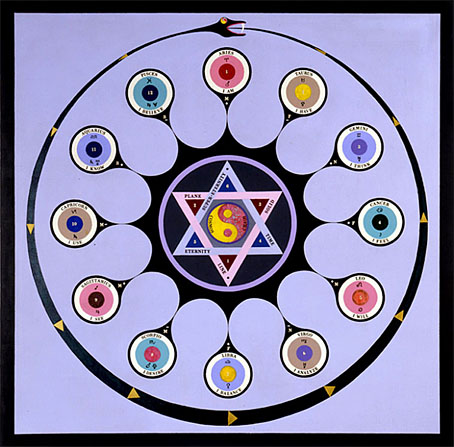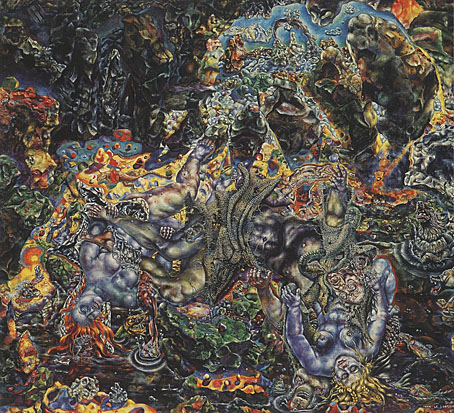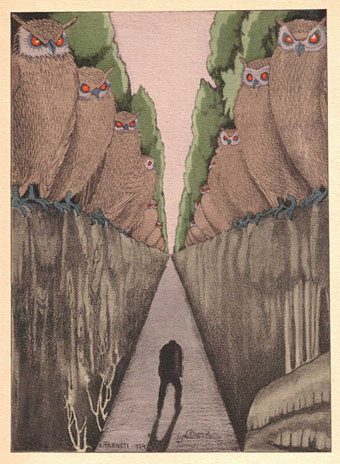Astrological Ouroboros (1965) by Paul Laffoley.
Language of the Birds is an occult-themed art show at 80WSE, New York University, that opened this week and runs to 13 February, 2016. Curator Pam Grossman has assembled a stunning collection of work by artists, occultists, and occult-artists old and new:
Kenneth Anger * Anohni * Laura Battle * Jordan Belson * Alison Blickle * Carol Bove * Jesse Bransford * BREYER P-ORRIDGE * John Brill * Robert Buratti * Elijah Burgher * Cameron * Leonora Carrington * Francesco Clemente * Ira Cohen * Brian Cotnoir * Aleister Crowley * Enrico Donati * El Gato Chimney * Leonor Fini * JFC Fuller * Helen Rebekah Garber * Rik Garrett * Delia Gonzalez * Jonah Groeneboer * Juanita Guccione * Brion Gysin * Frank Haines * Barry William Hale * Valerie Hammond * Ken Henson * Bernard Hoffman * Nino Japaridze * Gerome Kamrowski * Leo Kenney * Paul Laffoley * Adela Leibowitz * Darcilio Lima * Angus MacLise * Ann McCoy * Rithika Merchant * William Mortensen * Rosaleen Norton * Micki Pellerano * Ryan M Pfeiffer & Rebecca Walz * Max Razdow * Ron Regé, Jr. * Rebecca Salmon * Kurt Seligmann * Harry Smith * Kiki Smith * Xul Solar * Austin Osman Spare * Charles Stein * Shannon Taggart * Gordon Terry * Scott Treleaven * Panos Tsagaris * Charmion von Wiegand * Robert Wang * Peter Lamborn Wilson * Lionel Ziprin
El Nigromante (1950) by Leonora Carrington.
More details for lucky New Yorkers may be found here. In addition, there’s an Occult Humanities Conference that runs through the weekend of February 5th.








